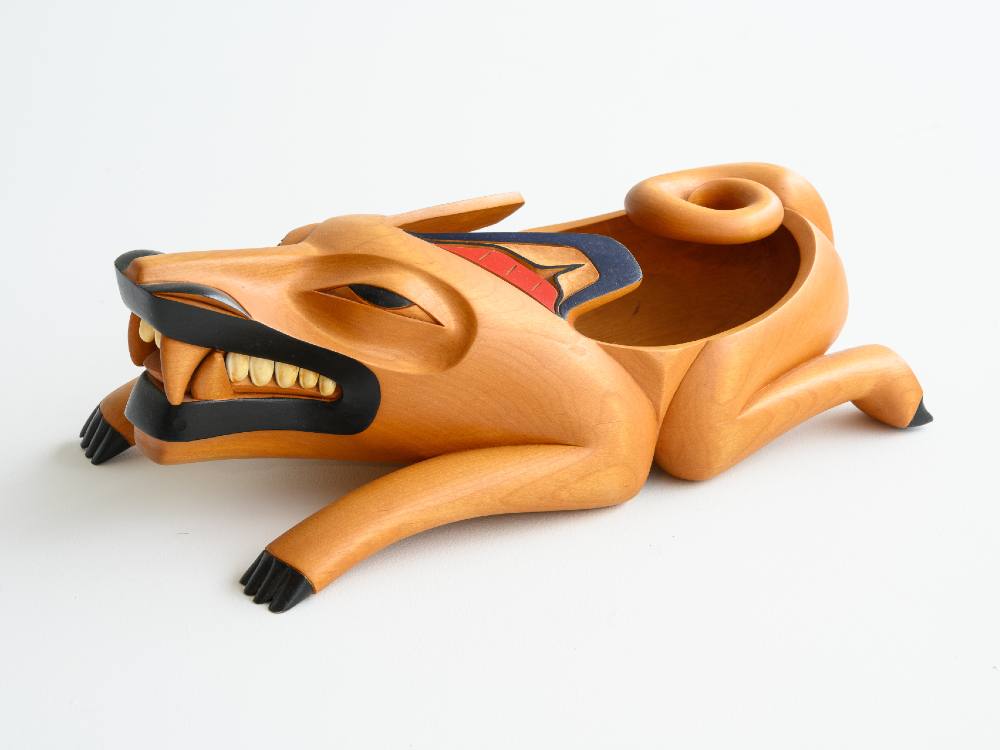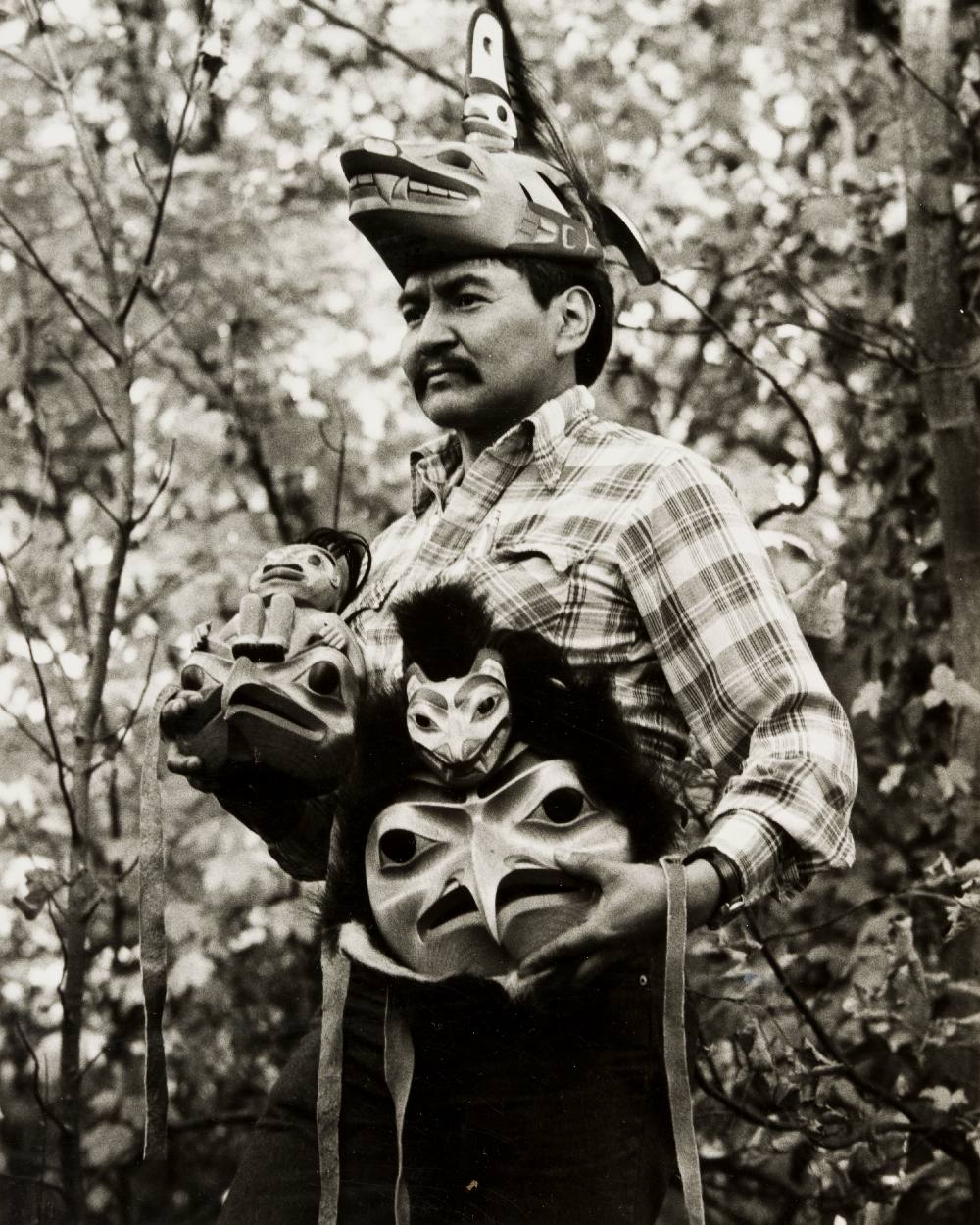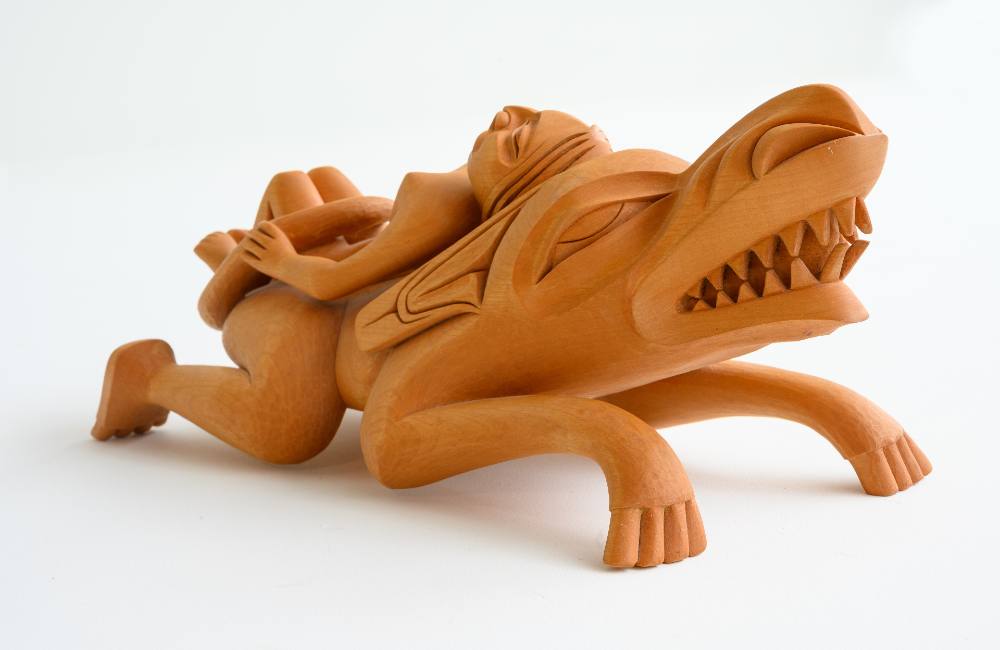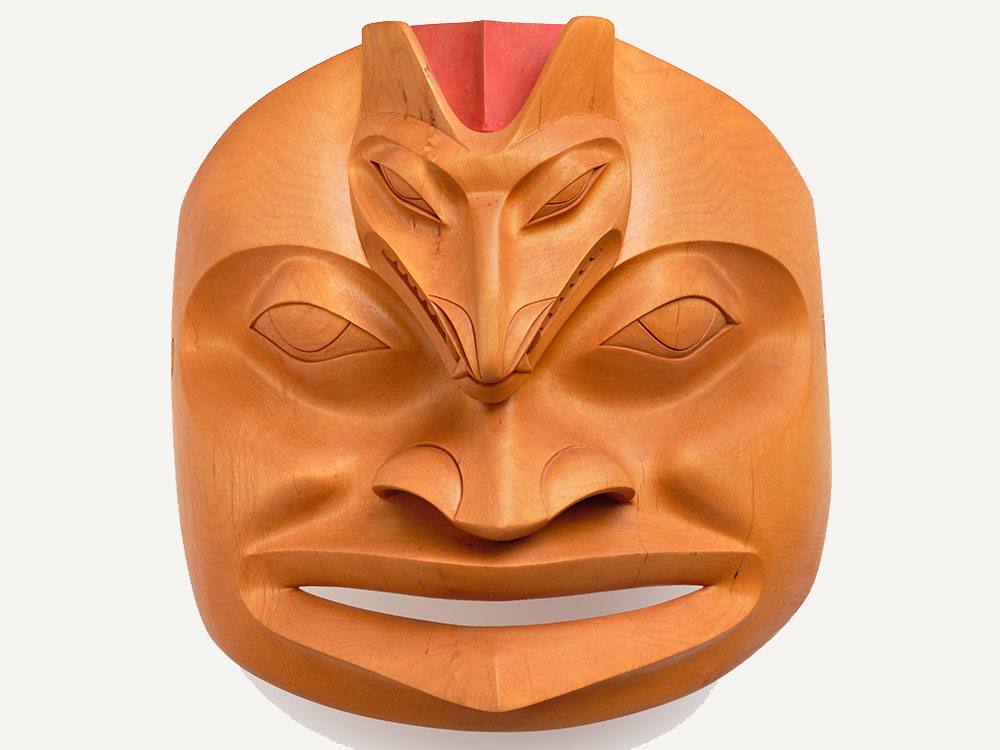The Audain Art Museum in Whistler is something to see. In addition to the building itself, which is remarkable enough, there is the art inside.
It’s always something of a curious experience to see paintings in the flesh, especially images that one has been long familiar with, like the work of Emily Carr or E.J. Hughes. When you can look at art up close and see brush strokes or the way the artist’s arm moved as they were sketching or painting, the work takes on a bodily, corporeal resonance that simply does not exist in the digital or print realm.
It’s why, when there are so many options and different ways of seeing art, we physical beings, otherwise known as humans, still trundle off to galleries and museums to look at things that other humans have made.
All of which brings me to the work of Dempsey Bob. The Tahltan and Tlingit artist is the focus of an expansive new show at the Audain: Wolves: The Art of Dempsey Bob. The exhibition is the artist’s first major retrospective, with more than 100 works that span the last four decades.
A co-production of the Audain Art Museum and McMichael Canadian Art Collection, the Whistler show will travel to the Montreal Museum of Fine Arts and the Kelowna Art Gallery after Whistler. But the touring exhibition will feature a smaller, more transportable amount of work. So, if you’re in the vicinity of Whistler, or even if you’re not, head up the highway and see this show.

The level of craft in Dempsey Bob’s work is readily apparent, but what is more surprising is the humour, the eroticism and the level of experimentation that manifests throughout the different mediums, whether wood, bronze, gold or plain old paper.
Some of the most interesting pieces are also the most unsettling, although perhaps that isn’t exactly the right word. Maybe alive is better, imbued with a capering glint of animus that moves them from something to look at to something that demands direct engagement.
A case in point is an alder mask entitled The Smart One. In the text that accompanies the work, the artist explains his relationship with the work — equal parts collaboration, challenge and something else ineffably more mysterious. Sometimes, a piece arrives almost independently demanding that the artist brings it into being. This experience is often described by artists as feeling like a channel or a conduit for work that wants/needs to come into this world.
In an early interview with Diana Nemiroff featured in the catalogue for the landmark 1992 show at the National Gallery of Canada entitled Land, Spirit, Power, Dempsey Bob explained the origins of The Smart One.
“There was a man who was the keeper of the stories. He was trained from childhood to memorize the stories of our clan and of our tribe. And if he couldn’t say the stories word for word, he couldn’t be the storyteller. They called him the smart one because if there was a dispute between the clans or in the tribe, he would settle it with a story. They would call him in, and he would relate the story and that would settle it. I thought, who’s going to know there was a man like that? Nobody’s going to know there was a smart one.”
The inclusion of the piece in the Audain exhibition came about through a somewhat serendipitous route. Purchased by a collector in 1989 after one of Dempsey Bob’s first major solo shows, the piece hasn’t been seen even by the artist himself since then. But here it is in the Audain, in all its singularity.

The piece feels alive, filled with humour, mischief and a razored intelligence. It is worth the trip to Whistler, just to stand close to it and let its spirit emanate out all around you. But there’s plenty of other things to look at as well. Masks, panels, regalia, bronze and gold jewelry. The wealth of different materials that are part of the artist’s work are multiple and myriad, whether it’s yellow cedar, alder, shells, fabric, glass mirrors or even sea lion whiskers. Each carries its own significance, tactility and deep foundational beauty.
The female figures in Wolves are particularly powerful, resonant, fired with sensuality and sass. It is impossible not to look at these characters and wonder about the artist who made them. Luckily, the man likes to talk. The book that accompanies the show Dempsey Bob: In His Own Voice, is peopled with the artist’s stories, drawn from interviews with co-curator Sarah Milroy. It’s a cornucopia of information on the artist’s process, history and life.

Born in Telegraph Creek in northwest B.C., and one of 10 children, Dempsey Bob artist grew up in Port Edward, drawing and carving whatever came to hand, whether it was stuff out of the Sears catalogue or more traditional things. His family was part of the Wolf Clan, a matrilineal line. The artist regularly collaborates with his sisters. The influence of Haida carver Freda Diesing had a profound impact on his work. It is Diesing who he credits for helping shape him as an artist, but other cultures (the Maori people of New Zealand) as well as more contemporary art practices also informed his practise.
Like other Indigenous artists (Robert Davidson springs to mind) Dempsey Bob began his career after the period of cultural obliteration when finding any traditional art objects was often a formidable challenge. Those were the dark times, wherein traditional practises like potlatch were banned by the federal government, compounded by residential schools. The potlatch ban wasn’t lifted until 1951 and by that time, Elders who remembered songs and dances were few and far between. Events such as Davidson’s carving of a totem pole in 1969, the first in almost 100 years, marked a resurgence of interest in traditional forms.
Bob has been forthright about the precarious place of Indigenous artmaking, stating in numerous interviews that traditional carving was hanging by a thread. Part of ensuring that the old ways were maintained was to look back at what earlier artists achieved. In the 1970s and ‘80s, Bob studied traditional Tlingit work, building his career, with solo exhibitions in the 1990s.
After finishing his education at the Gitanmaax School of Northwest Coast Indian Art near ‘Ksan Historical Village and Museum, Bob also taught in communities in both the U.S. and Canada, mentoring a number of emerging artists, and passing on the skills that became part of the ongoing renaissance of Indigenous artmaking.
In addition to major commissions for the Vancouver airport as well as being featured in galleries around the world, he was awarded honourary degrees from the University of British Columbia and the Emily Carr University of Art + Design, an appointment as an officer of the Order of Canada and a Governor General’s Award in visual and media arts in 2021.
Dempsey Bob currently lives in Terrace, B.C., where he continues to make his astounding work. Go and see it.
'Wolves: The Art of Dempsey Bob' runs until Aug. 14 at the Audain Art Museum in Whistler. ![]()
Read more: Indigenous, Art

















Tyee Commenting Guidelines
Comments that violate guidelines risk being deleted, and violations may result in a temporary or permanent user ban. Maintain the spirit of good conversation to stay in the discussion.
*Please note The Tyee is not a forum for spreading misinformation about COVID-19, denying its existence or minimizing its risk to public health.
Do:
Do not: